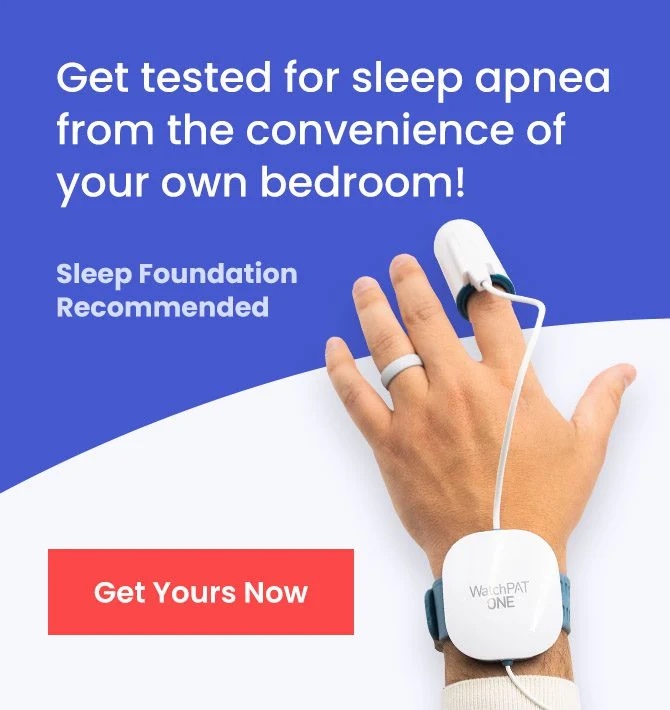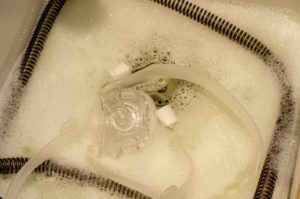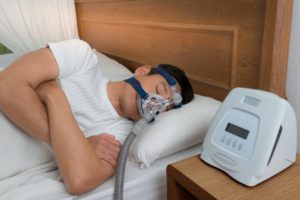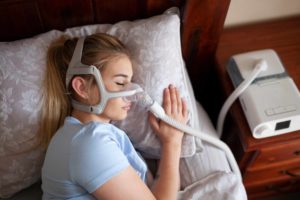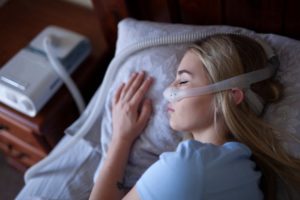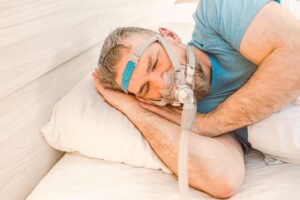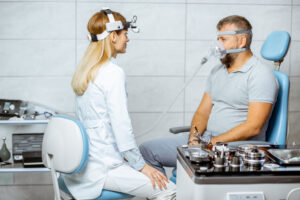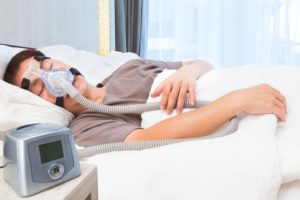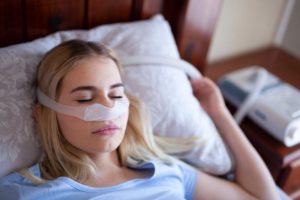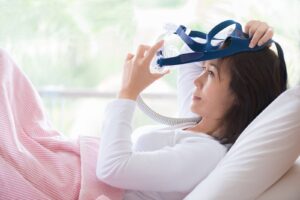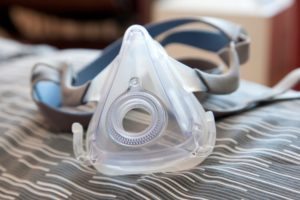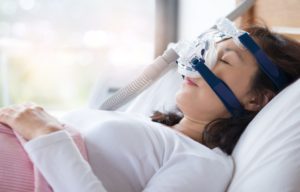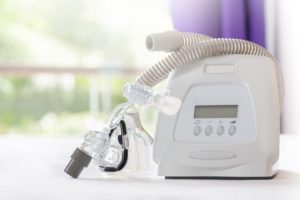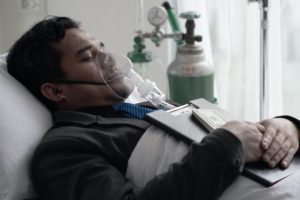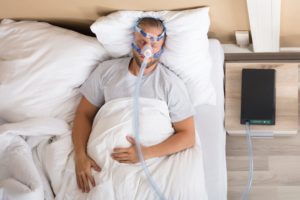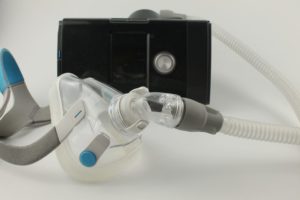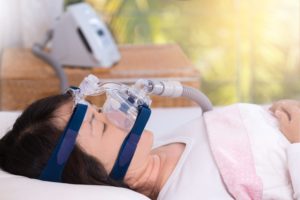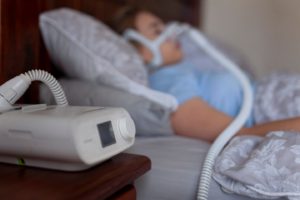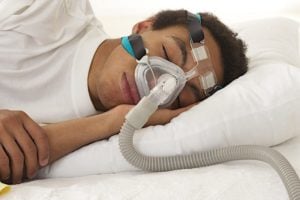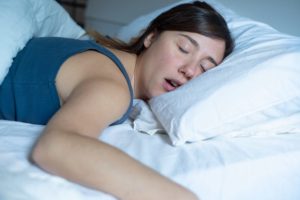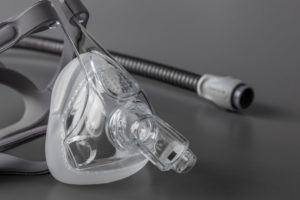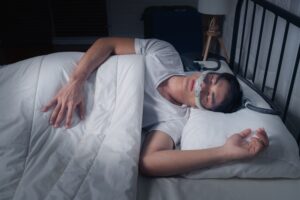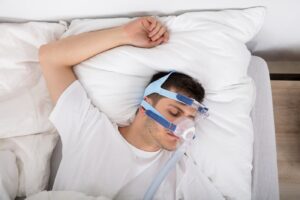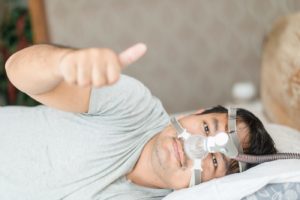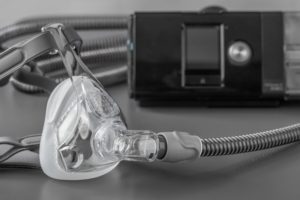When you buy through our links, we may earn a commission. Products or services may be offered by an affiliated entity. Learn more.
APAP vs. CPAP
- APAP machines automatically adjust pressure throughout the night based on your breathing patterns, while CPAP machines deliver one fixed pressure set by your doctor.
- APAP often allows for at-home titration, meaning pressure ranges can be determined using data from your real sleep rather than relying solely on an in-lab study.
- Research suggests both APAP and CPAP are similarly effective at treating obstructive sleep apnea, though individual comfort and tolerance may differ.
Positive airway pressure (PAP) therapy is a commonly prescribed treatment for people diagnosed with obstructive sleep apnea (OSA). OSA is a sleep disorder in which blockages in the airway cause a person to experience frequent episodes of stopped or slowed breathing while they sleep. PAP therapy helps keep the airway open and prevent these nighttime blockages.
There are multiple types of PAP therapy used to treat OSA, including continuous positive airway pressure (CPAP) and auto-adjusting positive airway pressure (APAP) therapy. Below, we compare and contrast these two types of PAP therapy, as well as discuss their pros and cons and who may benefit from each.

Exploring CPAP Machines — But Haven’t Been Tested Yet?
Start with our easy, at-home sleep test. It’s stress-free and effective. Get results within a few days.
How Is APAP Different From CPAP?
While APAP and CPAP machines are both types of PAP therapy used to treat obstructive sleep apnea, they differ in the levels of air pressure they release. CPAP releases air at a fixed rate, while APAP releases air at a rate that changes in response to the sleeper’s needs.
Technically, an APAP is a type of CPAP machine that includes technology allowing the machine to auto-adjust how much air it delivers at a given time. Traditional CPAP machines that don’t contain this technology are sometimes referred to as fixed-level CPAP devices, because they deliver air at a fixed rate of pressure.
In the past, fixed-level CPAP machines were most commonly prescribed, but in recent years, the use of APAP machines is increasing .
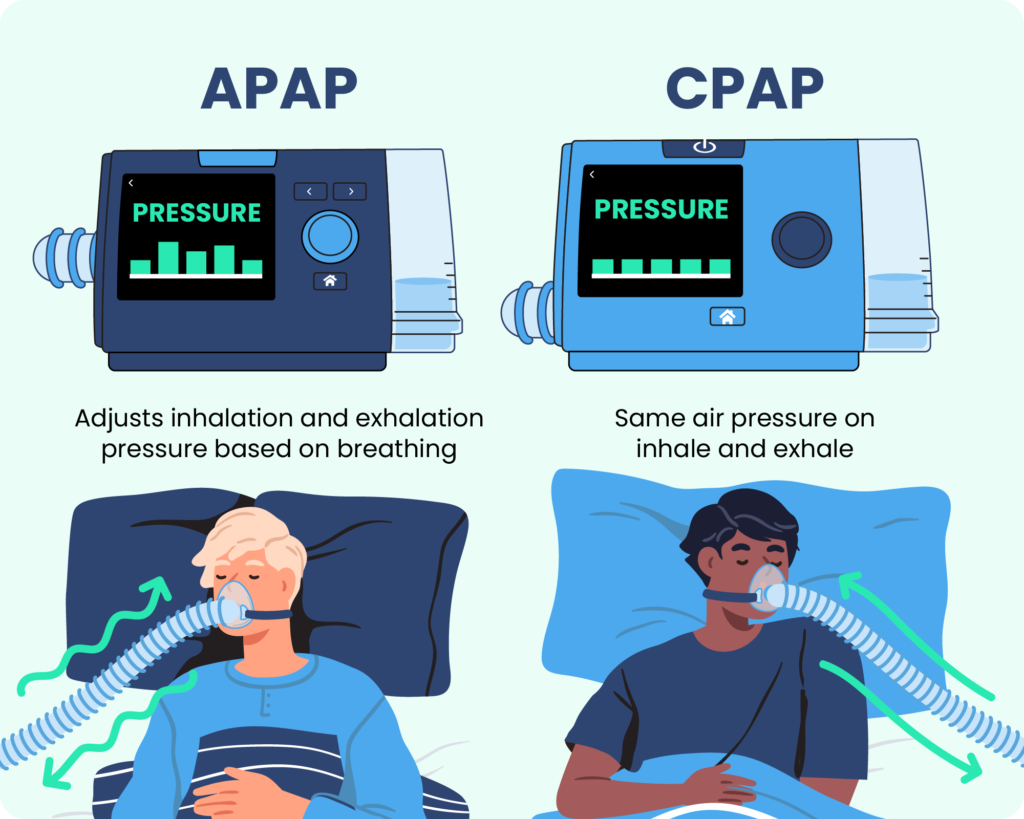
Since APAP machines (aka auto-titrating CPAP or auto-CPAP machines) auto-adjust in response to a person’s breathing, the initial set-up can usually occur in a person’s home , using the machine itself. By contrast, the initial set-up of a fixed-level CPAP machine requires either an overnight sleep study in a lab or the temporary use of an APAP machine at home.
However, certain factors, such as suspected air leakages or the presence of other health problems, may require a person to have their APAP titration in a sleep lab rather than at home.
While some studies show that people tend to use an APAP machine
longer each night
than they would a CPAP machine, more evidence is needed to determine which type of machine is more effective at reducing OSA symptoms. Current research suggests both types of PAP therapy are about equally effective.
Another type of PAP therapy sometimes prescribed to people with OSA is bilevel positive airway pressure (BiPAP or BPAP). Doctors usually prescribe BiPAP only to people who have another sleep disorder or who have tried CPAP and APAP therapies but could not tolerate them.
What Are the Pros and Cons of APAP Machines?
Using an APAP machine to treat obstructive sleep apnea may provide some advantages over other types of PAP therapy.
- In-home titration: While the set-up of BiPAP and fixed-level CPAP devices often requires an overnight stay in a sleep lab, an APAP device’s settings can be determined in a person’s home with the machine’s auto-adjusting feature.
- Reduced average air pressure: Some people find it uncomfortable to breathe out against the constant pressure of a fixed-level CPAP. Compared to a CPAP, an APAP machine releases air at a lower average pressure throughout the night, making it easier to handle for some users.
- Adjusting to users’ needs: An APAP machine’s ability to automatically adjust air pressure could benefit a person as their needs change at different times. For example, drinking alcohol, gaining or losing weight, and changing sleep positions can all alter the pressure level a sleeper needs from their PAP machine.
However, there may be some disadvantages to using an APAP machine. For instance, APAP machines cost more on average than CPAP machines. The higher price can be a particular disadvantage if a person’s health insurance does not cover the full cost of their treatment.
Although some people are sensitive to the fixed rate of air pressure from a CPAP machine, others may prefer it to the fluctuating rate of air pressure from an APAP machine. An APAP machine’s regular changes in air pressure during the night could cause brief sleep disruptions, which may lead to side effects.
APAP therapy may also cause the same side effects associated with other types of PAP therapy, including:
- Stuffy nose
- Sore throat
- Dry mouth
- Nosebleeds
- Irritated eyes
- Chest discomfort
- Skin irritation from the mask
- Claustrophobia or feeling trapped
Most of these problems are minor and can be easily fixed by trying a different mask type, cleaning the PAP machine, using a humidifier, or using nasal saltwater spray.
APAP vs. CPAP: Which One Is Right for You?
Both APAP and CPAP machines are effective treatments for obstructive sleep apnea, but the best choice depends on how stable your pressure needs are, how you tolerate therapy, and what your doctor recommends.
Who Is APAP Best For?
APAP may be a good option if you:
- Need different pressure levels depending on sleep position, sleep stage, or nasal congestion
- Experience side effects from higher fixed CPAP pressures, such as bloating or difficulty exhaling
- Prefer lower average pressure during the night
- Did not complete an in-lab titration study and need at-home pressure adjustment
- Travel frequently or want a device that adapts to night-to-night changes
Who Is CPAP Best For?
CPAP may be a better choice if you:
- Have consistent pressure needs that don’t vary much during sleep
- Respond well to a single, stable pressure setting
- Prefer a simpler device with fewer adjustments
- Have certain medical conditions where a fixed pressure is recommended
- Are following insurance or compliance requirements that specify CPAP use
How Do You Get an APAP or CPAP Machine?
Getting an APAP or CPAP machine starts with a diagnosis of obstructive sleep apnea from a healthcare provider. If you’re concerned about your nighttime breathing and think that you may have obstructive sleep apnea, make an appointment with your doctor. Common OSA symptoms include:
- Loud snoring
- Gasping or stopping breathing while asleep
- Daytime tiredness
- Trouble focusing
- Dry mouth
- Headaches
- Reduced sexual interest
- Nighttime awakenings to urinate
Based on your symptoms and health history, your doctor may refer you for a sleep study, which may be done either in a sleep lab or at home using an at-home sleep apnea test. Once sleep apnea is confirmed, a doctor will write a prescription that specifies the type of device and pressure settings (or pressure range, in the case of APAP).
With a prescription, you can obtain a CPAP or APAP machine through a durable medical equipment (DME) provider or an authorized online retailer. Many people use insurance, including Medicare, which typically covers PAP machines under specific conditions, such as meeting usage and compliance requirements. Your provider or supplier can help you understand coverage, setup, mask selection, and how to use the machine effectively.
If you use a CPAP machine and have difficulty tolerating the air pressure, you may want to talk to your doctor about switching to an APAP machine. Your medical provider can help you determine which OSA treatment is the best for you.
Frequently Asked Questions
Does APAP work as well as CPAP?
Yes. For most people with obstructive sleep apnea, APAP and CPAP are similarly effective at reducing breathing interruptions and improving sleep quality. Effectiveness ultimately depends on which option you’re able to use consistently and comfortably.
Is APAP more expensive than CPAP?
APAP machines often cost slightly more upfront than standard CPAP machines because of their auto-adjusting technology. However, insurance coverage is usually similar for both, and out-of-pocket costs depend on your plan, deductible, and whether the device is rented or purchased. Over time, the price difference may be minimal.
Which is more comfortable, CPAP or APAP?
Many people find APAP more comfortable because it delivers lower pressure when higher pressure isn’t needed, which can make breathing feel more natural. That said, some users prefer the consistency of CPAP and sleep just as well with a fixed pressure. Comfort is highly individual, and the best choice is often the one you tolerate best night after night.

Still have questions? Ask our community!
Join our Sleep Care Community — a trusted hub of product specialists, sleep health professionals, and people just like you. Whether you’re searching for the perfect mattress or need expert sleep advice, we’ve got you covered. Get personalized guidance from the experts who know sleep best.
References
4 Sources
-
Perin, C., & Genta, P. R. (2021). Less may be more: CPAP vs. APAP in the treatment of obstructive sleep apnea. Jornal Brasileiro de Pneumologia, 47(6), Article e20210455.
https://pubmed.ncbi.nlm.nih.gov/34932732/ -
Freedman, N., & Kuzniar, T. J. (2021, March 4). Mode selection for titration of positive airway pressure in adults with obstructive sleep apnea. In S. M. Harding (Ed.). UpToDate.
https://www.uptodate.com/contents/mode-selection-for-titration-of-positive-airway-pressure-in-adults-with-obstructive-sleep-apnea -
Brown, L. K., & Lee, W. (2022, August 25). Titration of positive airway pressure therapy for adults with obstructive sleep apnea. In N. Collop (Ed.). UpToDate.
https://www.uptodate.com/contents/titration-of-positive-airway-pressure-therapy-for-adults-with-obstructive-sleep-apnea -
A.D.A.M. Medical Encyclopedia. (2022, January 1). Positive airway pressure treatment. MedlinePlus.
https://medlineplus.gov/ency/article/001916.htm



